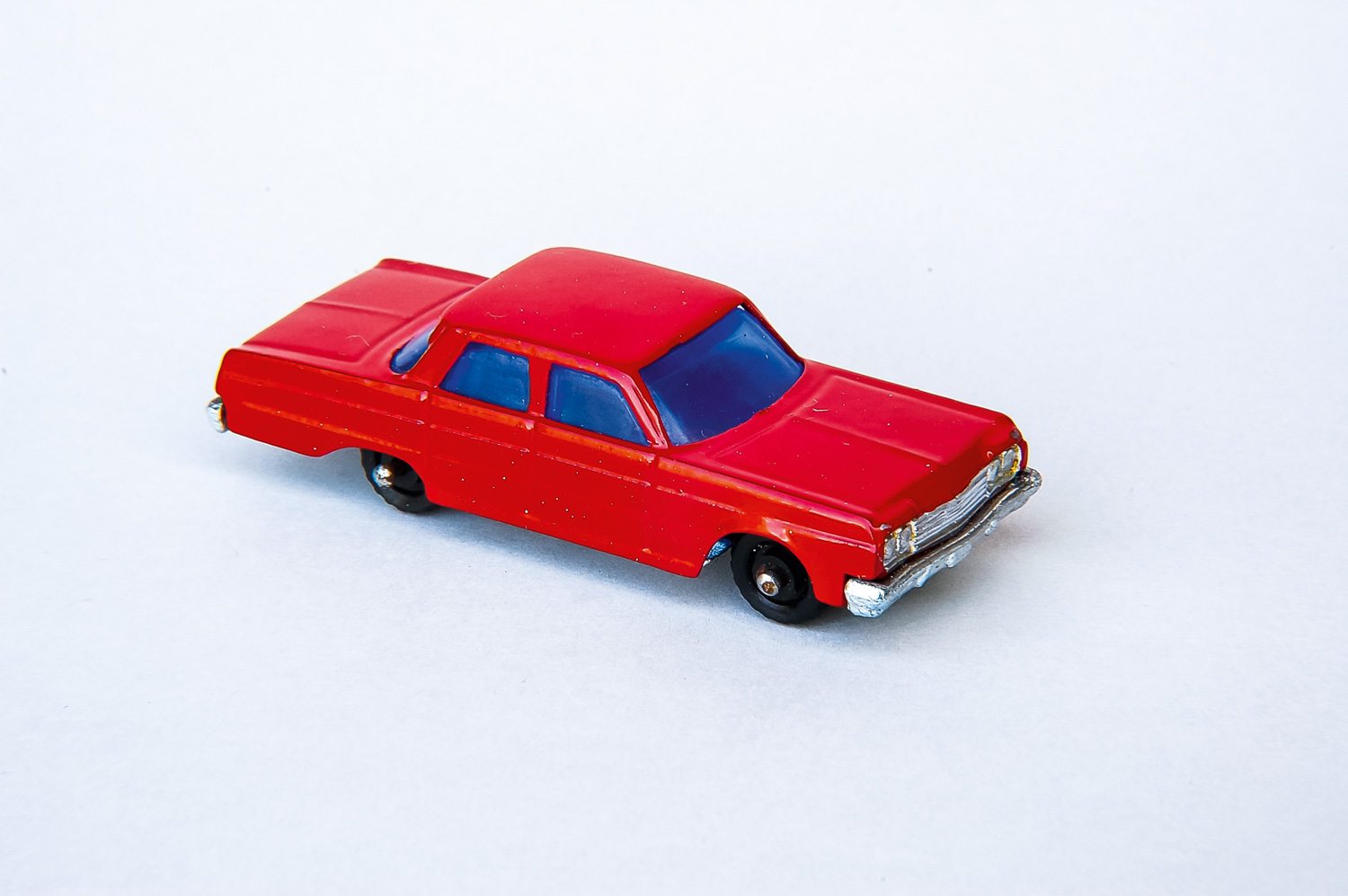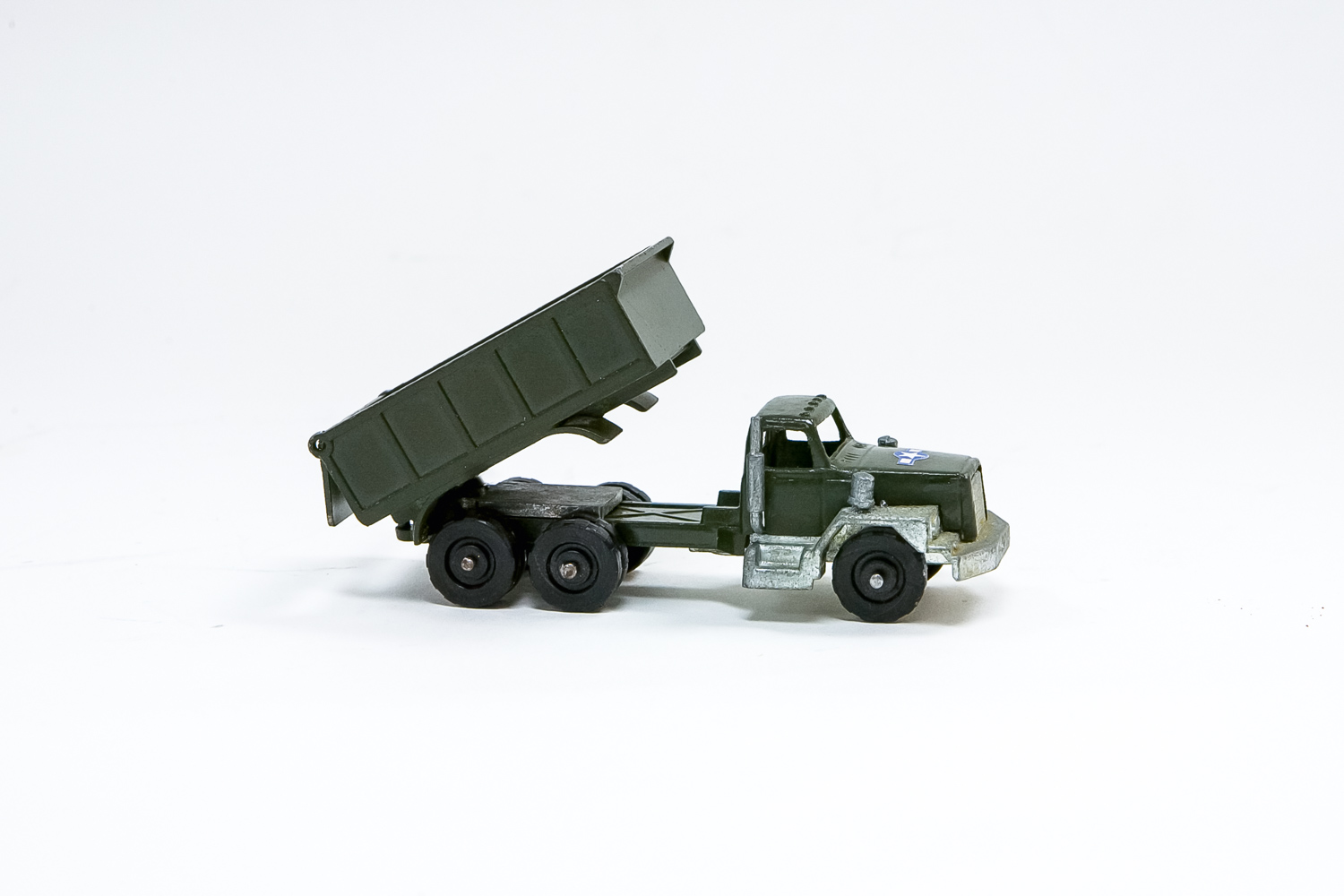These early Fun Ho! models were designed to fill a demand for Matchbox-type toys on the domestic market when demand outstripped the supply in an era of tightly regulated import controls.
Though they lacked the sophisticated features and, in most cases, the moving parts of the imports from Britain, sales really took off, and today they are among the best remembered of the Fun Ho! toys.
Production of the Midgets lasted until 1982, when they could no longer compete with the influx of cheaper imported alternatives flooding the market in an increasingly deregulated economy.
All the Midgets were cast at Inglewood, on the Underwood Engineering site that became the home of the Fun Ho! National Toy Museum in 1990.

Midget history
This began in the early ’60s when Underwood bought dies from Streamlux, an Australian company that had discontinued its range of miniature vehicles. Some painted parts came with them and were used by Fun Ho! on early models. The Fun Ho! toolmakers eventually removed all Streamlux references from the moulds, although some of the company’s early Austin commercial vehicle models were bought marked as ‘Streamlux Aust.’ products.
Models produced from the Streamlux dies were the Massey Ferguson Tractor, Holden EF Saloon, Austin Truck, Mobil Tanker — with Austin cab, Volkswagen Combi Bus, Mercedes-Benz Racer, BOAC Bus — built on a Commer chassis, Austin Tip Truck, and Volkswagen Sedan.

The Volkswagen Combi, sometimes referred to in Fun Ho! publications as the ‘Kombi’, remained in production from 1964 to 1982, the entire period of manufacture. It was the longest catalogue life for any of the Midgets.
The original Midgets sported a chrome- and copper-plated finish, but, from early in 1966, they began appearing in the same bright colours as the Fun Ho! cast-aluminium toys. Zinc-plated bases date from around this period and eventually became standard on all Midgets.
A marketing arrangement saw the models sold in Mobil packaging circa 1964–’67. Next, they appeared in red and yellow boxes, and then in visi packs.
Classic saloons
Fun Ho! introduced the first of its own Midget castings in 1965. The models that year were mostly based on popular saloons that came off the country’s assembly lines during the era.
Both the Ford Falcon and the Vauxhall Velox are considered by collectors to be rather flat-sided representations of the actual cars. A Morris Mini, Morris 1100, Fordson Major Tractor, and Austin Mini comprised the rest of the new models from 1965. An Austin 1100 went into the catalogue during 1966.

Another model introduced in 1966 was the Ford Cortina Estate Car, which had an opening tailgate. The tailgate, from the only estate car produced in the Midget range, was known to fall off and become lost after repeated (rough) openings.
Bedford cab commercials appeared in the catalogue from 1966, starting with the Articulated Truck and followed, in the same year, by the Articulated Petrol Tanker in Mobil finish and the Bedford Truck with rigid tray. In 1967, the Articulated Tanker saw service as the Milk Tanker and, from 1977, as the Army Tanker. A combined total of 636,700 castings were produced for the Bedford tanker in petrol, milk, and army versions.
No new models were introduced in 1968, while 1969 could be called ‘The Year of the Caterpillar’, with three added to the catalogue: Caterpillar Tractor D8, Caterpillar Front End Loader, and Caterpillar Bulldozer.
The ’70s

The first deletions from the catalogue came in 1970, and these included the MGB, the only open-top Midget sports car produced. Fun Ho! solved the problems caused by technology and size by representing the MG’s windscreen in solid form.
Starting with the Road Construction Set in 1976, Fun Ho! produced five gift sets containing six Midget models each. The boxes were labelled ‘Fun Ho! Mighty Mover’, and, with the exception of the Road Set, they were called ‘Kits’ on the packaging.
Models in army finish debuted in 1977. The Military Movers series began with the Armoured Jeep, a model in which the gun could rotate a complete circle and be raised 45 degrees. It was a right-hand drive vehicle but decorated with the US military star and bars.
A small range of King Size models, a series introduced in 1973, was still being made when the factory closed in 1982.
National Toy Museum
Repro versions of the Fun Ho! Midgets began with the issue of the Landliner Bus in Fun Ho! livery to commemorate the opening of the Fun Ho! National Toy Museum in 1990. The model was assembled from unassembled castings stored after factory production stopped in 1982. Castings of at least 20 other Midget toys were included this stockpile, and were used in future releases.

In 1991, the museum issued the Jaguar MkX Saloon and the Ford Thames Freighter Pickup with chrome bodies and zinc bases.
Blue-tinted plastic windows were fitted to 14 models in the 1996 Repro release, which included the Volkswagen Kombi, the Jaguar MkX, and the Thames Freighter Pickup. Some models from this issue were sold in Australia by the Sydney-based Message Books and Models in boxes printed in Australia that were accurate reproductions of the New Zealand originals.
The Inglewood Development Trust purchased the Fun Ho! National Toy Museum in 1999 and relocated the collection to 25 Rata Street, Stratford, where Richard Jordan runs the on-site toymaking operation Fun Ho! Toys.

In 2014, Richard continues to assemble selected Midget models in small quantities from the stockpiled castings. Models currently available are Chevrolet Bel Air, Ford Thames Freighter, and Utility Runabout — Holden.
He says that when the existing supply of castings ends, there will be no more Midgets produced. Photos by Kristy Strachan Photography.








































